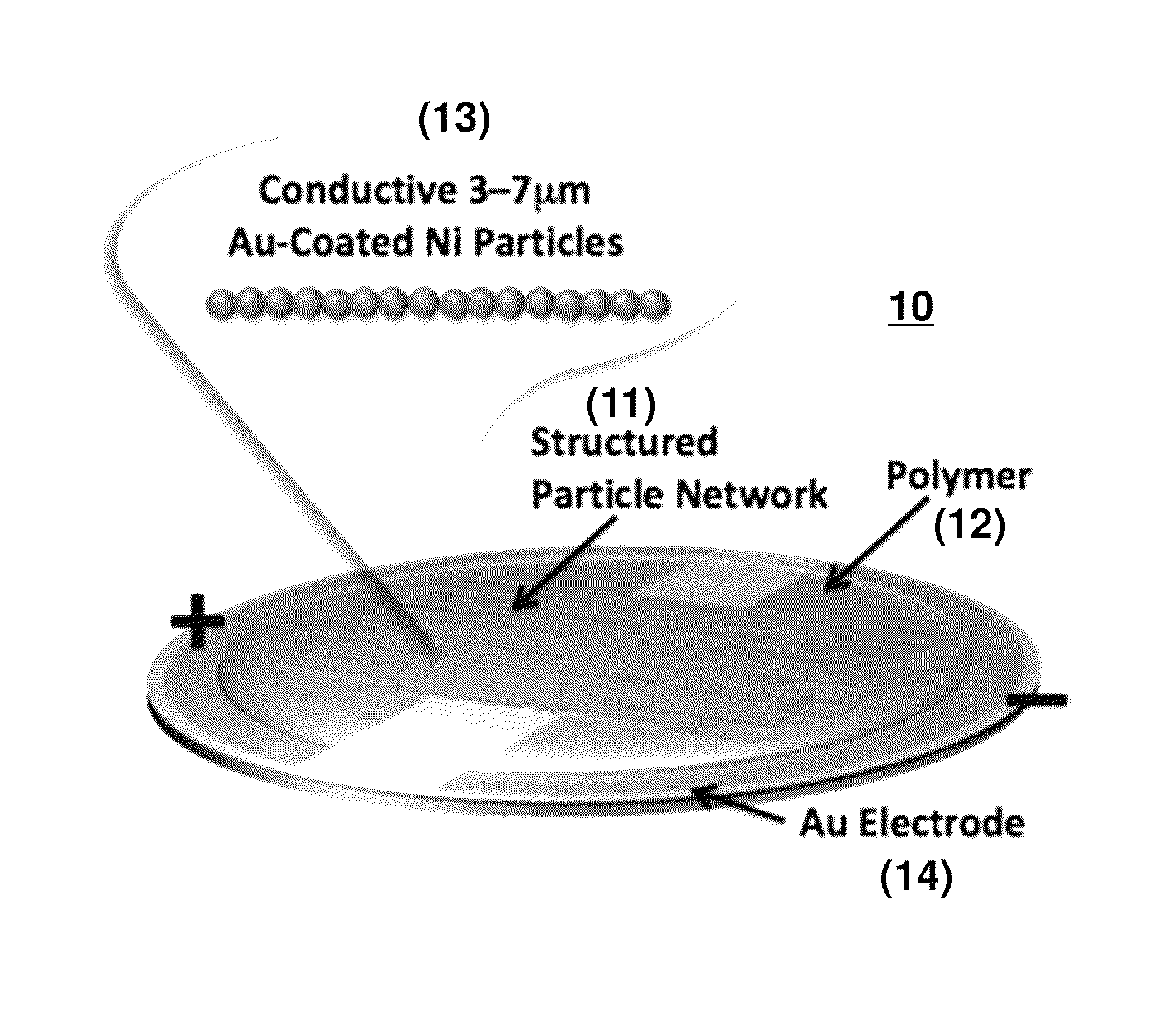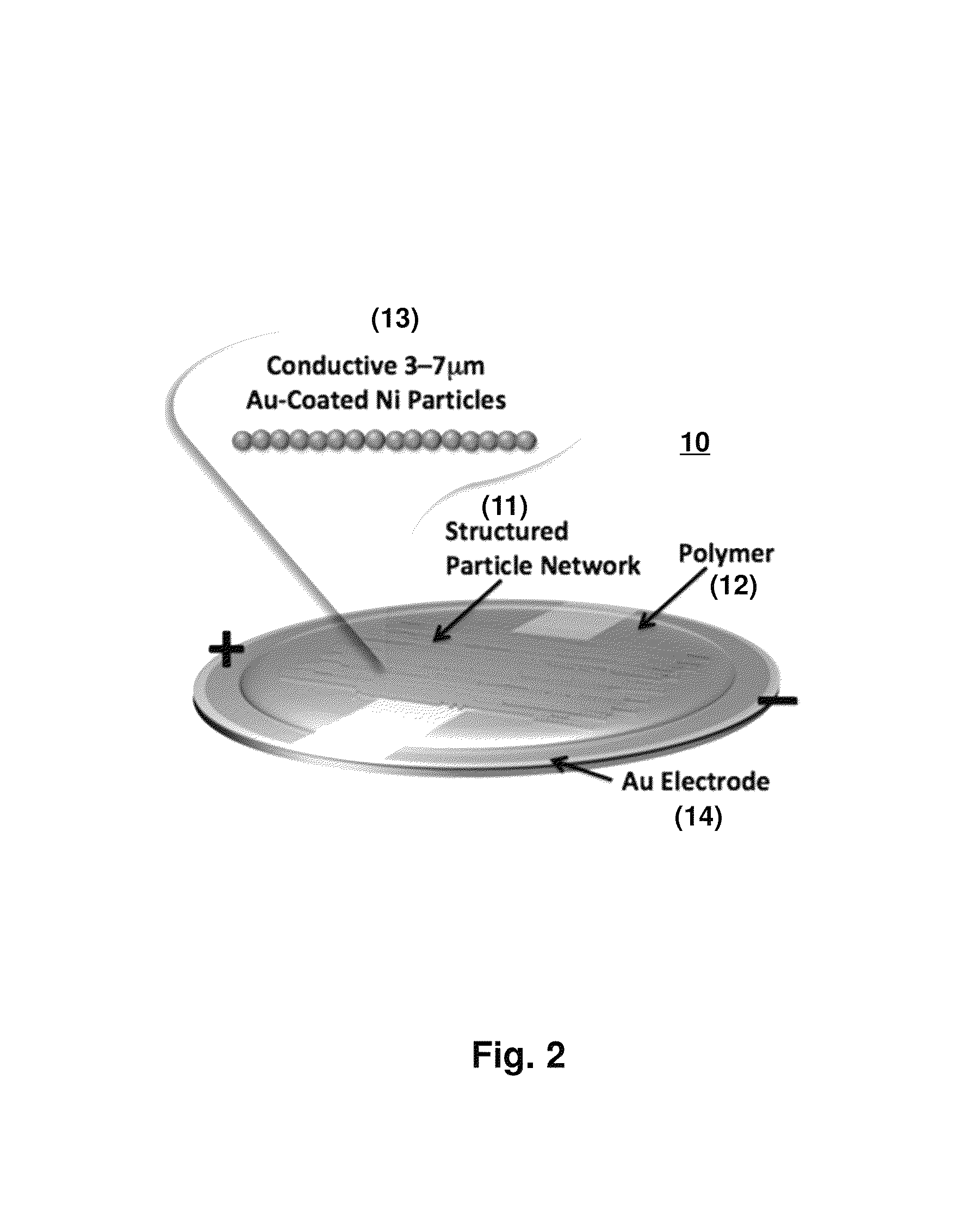Dynamic tuning of chemiresistor sensitivity using mechanical strain
a chemiresistor and dynamic tuning technology, applied in the direction of instruments, material analysis, material thermal analysis, etc., can solve the problems of single conventional chemiresistor not being able to provide sensitivity over a wide range of analyte, fscr reversibility, etc., to achieve the effect of reducing contact pressure, reducing contact pressure, and increasing resistance of field-structured composites
- Summary
- Abstract
- Description
- Claims
- Application Information
AI Technical Summary
Benefits of technology
Problems solved by technology
Method used
Image
Examples
Embodiment Construction
[0019]This invention is directed to a resistance-based chemical sensor (chemiresistor) device with tunable sensitivity that enables selection of different sensitivity ranges of operation for a single chemiresistor device. The sensitivity can be reversibly varied over a range of approximately two decades by the application of strain.
[0020]The electrical conductivity of a chemiresistor is sensitive to strain of various types, including uniaxial strain (tensile and / or compressive), shear, and volumetric. In some embodiments of this invention, the resistive composite is mechanically strained to a lower initial conductance in the absence of an analyte. This produces a shift of the sensor's conductance baseline to one that is farther along the transduction curve where there is a higher sensitivity to the analyte. Varying the magnitude of mechanically induced strain enables reversible alteration of the sensor to selectively tune the sensor's sensitivity to a desired range. Embodiments empl...
PUM
 Login to View More
Login to View More Abstract
Description
Claims
Application Information
 Login to View More
Login to View More - R&D
- Intellectual Property
- Life Sciences
- Materials
- Tech Scout
- Unparalleled Data Quality
- Higher Quality Content
- 60% Fewer Hallucinations
Browse by: Latest US Patents, China's latest patents, Technical Efficacy Thesaurus, Application Domain, Technology Topic, Popular Technical Reports.
© 2025 PatSnap. All rights reserved.Legal|Privacy policy|Modern Slavery Act Transparency Statement|Sitemap|About US| Contact US: help@patsnap.com



